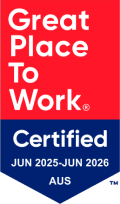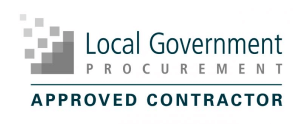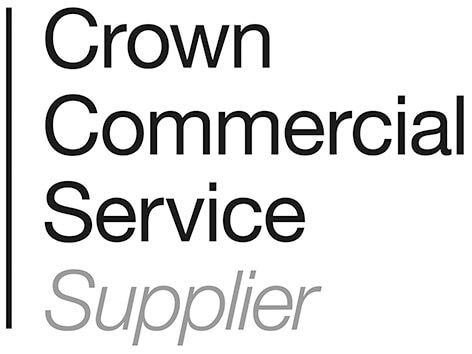Article
Last updated 30 October 2025
Enterprise Resource Planning (ERP) systems, like TechnologyOne, sit at the heart of modern organisations. They are not just another software application; they are the engine that drives how work gets done.
At the most fundamental level, the TechnologyOne ERP system enables everyday essentials: invoicing clients, engaging with customers, citizens or students, receiving payments, paying suppliers, and managing payroll. In more complex or asset-intensive organisations, the TechnologyOne ERP system becomes even more critical. It manages the full lifecycle of financial transactions and critical citizen, student, and customer information; tracks and maintains infrastructure assets; supports capital works programs; oversees workforce planning and student management; and ensures compliance throughout funding and revenue streams.
Put simply: if your TechnologyOne ERP system isn’t performing, your organisation stops performing.
The investment every organisation makes
Because your ERP system is so critical, implementing a new system is one of the most significant investments an organisation will ever make. It demands years of planning, executive sponsorship, change management, and significant investment – often millions – in combined internal and external resources.
For that reason, most organisations undergo a full ERP implementation only once every decade or more. It is a decision made carefully, and only when the business case is impossible to ignore.
But here lies the paradox: after such a large upfront investment, too many organisations treat their new TechnologyOne ERP system as ‘finished’ after go-live.
Investing in Your TechnologyOne ERP is never done
The truth is, the maintenance and configuration of your TechnologyOne ERP system is never complete. Once implemented, it requires continuous improvement to remain effective. For our clients, TechnologyOne release regular updates, enhancements, and entirely new modules designed to take advantage of innovations they are making in the cloud, artificial intelligence (AI) and advanced analytics.
Continuous improvement (CI) ensures you don’t just keep the lights on. It unlocks new efficiencies, insights, and ways to improve the lives of your stakeholders. Without it, the system that was once fit for purpose quickly becomes a constraint. Processes slow, compliance risks creep in, and staff turn to manual workarounds or shadow IT.
In short, neglecting continuous improvement erodes the very value the TechnologyOne system was meant to create.
Why continuous improvement is business critical
In addition to harnessing the benefits of TechnologyOne updates and module launches, it’s critical that your ERP system evolves as your organisation evolves. The 4 key commercial drivers for continuous improvement are:
1. Business needs evolve
As organisations grow, evolve, diversify, or restructure, their processes, reporting requirements, and data needs change. A static TechnologyOne ERP system can quickly become misaligned with these needs.
2. User adoption and productivity
Incremental enhancements to system interfaces, workflows, and training can significantly improve user satisfaction and efficiency.
3. Regulatory and compliance changes
Regulations, financial reporting standards, and data governance requirements change regularly. A continuously improving TechnologyOne ERP system ensures your organisation remains compliant.
4. Release management and technical debt
Aggressive release schedules and security compliance requirements can become problematic when organisations fail to allocate sufficient time and resources for technical debt management.

The case for TechnologyOne continuous improvement
When organisations commit to continuous TechnologyOne ERP improvement, the results are clear.
- Employee engagement: modern workflows and better user experiences improve adoption and satisfaction.
- Strategic value: executives gain access to accurate, real-time insights that inform better decision-making.
- Efficiency gains: automation replaces manual work, freeing staff to focus on higher-value activities.
- Greater agility: the organisation can quickly respond to changes in the market, policy, or internal strategy.
- Increased resilience and sustained compliance: updated TechnologyOne systems reduce operational risk, while ensuring compliance with evolving regulations.
- Future-orienting: your TechnologyOne ERP system remains aligned with modern best practices and technologies, avoiding obsolescence.
Continuous improvement is not about chasing every new feature. It’s about ensuring your TechnologyOne ERP system remains aligned to strategy, keeps pace with regulatory requirements, and enables your workforce to do their best work.
Why TechnologyOne customers fall behind
Despite knowing this, many organisations struggle to maintain momentum. The reasons are all too familiar.
- Competing priorities: business-as-usual (BAU) demands make it difficult to dedicate resources to TechnologyOne ERP system improvements.
- Budget constraints: the cost of ongoing investment in training, optimisation, and system enhancements is often underestimated.
- Change fatigue: leaders hesitate to introduce more change after a major implementation.
- Knowledge gaps: without a clear roadmap or expertise, organisations may not even know what improvements are possible.
These are understandable challenges, but they come at a cost. Falling behind doesn’t just affect efficiency; it can compromise compliance, frustrate end users – staff, students and citizens, and erode stakeholder confidence.
The TechnologyOne continuous improvement model
The success of a continuous improvement program comes down to the planning of that program upfront; inserting the business metrics to ensure that the investment you are making is aligned to your business objectives. It needs to be aligned to your organisational resource constraints and measurable so you can review the investment that you’ve made over each year of your program and identify how well you invested in this component of ERP, and if you achieved a result from it.
Craig McLaughlin, Government Practice Lead, Lánluas Consulting
To keep pace with evolving business needs, technologies, and user expectations, a business requires a structured TechnologyOne continuous improvement model; one that ensures configurations and workflows remain efficient, integrations stay current, data is secure, and user experiences continually evolve.
Our article Why a Continuous Improvement Model is Crucial for TechnologyOne ERP Systems outlines best practices for building this framework, including establishing steering groups, regular review cycles, prioritised enhancement pipelines, and ongoing user engagement. It also highlights how partnering with independent consultancies, like Lánluas, can help organisations identify high-impact improvements and maintain digital momentum.
A leadership mindset
Executives play a critical role in setting the tone. When the TechnologyOne ERP system is viewed as a strategic ‘living’ business platform rather than a one-off IT project, investment in continuous improvement is seen not as a cost, but as a driver of long-term value.
The most successful organisations treat TechnologyOne ERP system improvement as an operating discipline with clear ownership, budget, and governance, and they ask the right questions:
- How well is our TechnologyOne ERP system supporting our strategy today?
- What efficiencies or insights are we leaving on the table?
- What risks do we face if we fall further behind?
By embedding TechnologyOne continuous improvement into the DNA of the organisation, leaders protect their original investment and build a platform that adapts as the business evolves.
Moving forward
Your TechnologyOne ERP system is too important to be static. It underpins the services, processes, compliance, and financial stability of every organisation. Standing still is not an option.
The organisations that thrive are those that treat TechnologyOne as a living system to be continuously improved, continuously aligned to business needs, and continuously unlocking new value.
Talk to the experts
For over a decade, we’ve been helping organisations unlock the full value of their TechnologyOne investment by building practical roadmaps for continuous improvement. Whether you’re in government, education, health, community services, or asset-intensive industries, we work alongside you to ensure your TechnologyOne ERP evolves with your business, not behind it.
Get in touch with us to start the conversation.
TechnologyOne CiA Adoption
Access our latest whitepaper for insights and guidance directly from TechnologyOne customers. Explore the drivers and challenges organisations, just like yours, are experiencing at each stage of the TechnologyOne ERP lifecycle, and learn how you can overcome them to ensure benefits and value realisation.
DownloadSign up to our newsletter for the latest news and insights.
Plus, get exclusive access to our VIP content.


